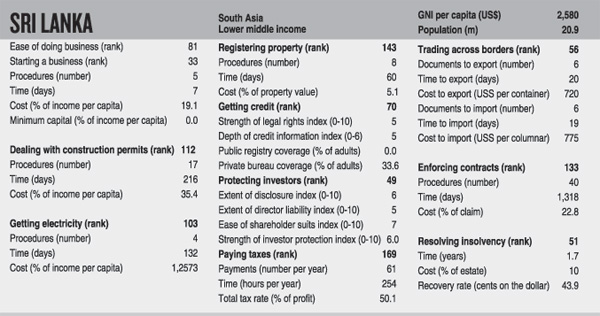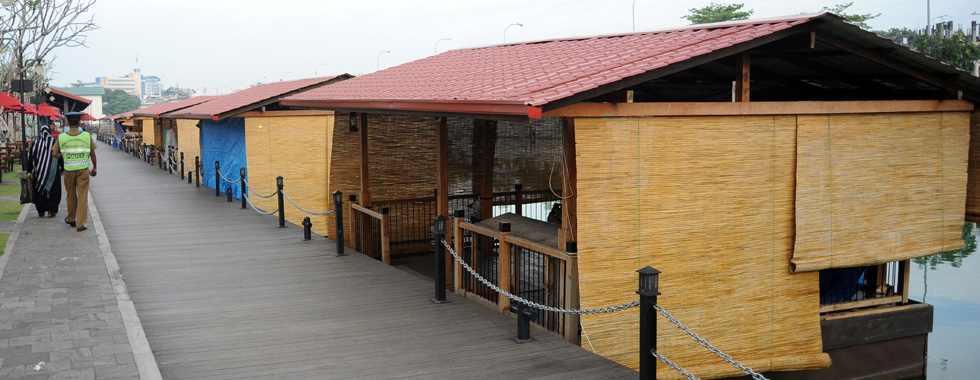Can Sri Lanka become the miracle of South Asia? Some lessons to move in that direction
Following the appointment of a new President Maithripala Sirisena and a new Prime Minister Ranil Wickremesinghe, it is important to evaluate scientifically how the economy of Sri Lanka will shape in the next six years.
This article by any means does not attempt to criticize nor discriminate the former government; instead it tries to shed some light on key areas that will promote economic growth which the former government failed to foresee or actively engage. As a deveoping country, it is a challenge to sustain the economy mainly through agriculture in order to keep pace with the rapidly advancing world. At present our main economic sectors are tourism, tea/ rubber export, apparel, textile, overseas employment, rice production and agriculture. The question is: Can we achieve long term inclusive economic growth with only these economic sectors in the next 30-40 years? We need to understand the trajectory of the world economy and place Sri Lanka strategically, in order to achieve sustainable economic growth. In my opinion, sustainable and inclusive economic growth could only be achieved through industrialisation, science and innovation with examples from many countries worldwide.
Even though there is no universally accepted development strategy to achieve higher economic growth, it is important for Sri Lanka to learn from other regional giants in order to fast-track the development process. Singapore and South Korea are two most-suitable countries to learn from, due to the many similarities both countries share with Sri Lanka. I am not suggesting Sri Lanka should imitate Singapore nor South Korea but share some thoughts on how these two countries have developed to be key players in the world, given the many obstacles possessed as being a city-state and overcoming a devastating Korean war, respectively.
Lessons from the Korean development process
At the end of a long war in 1953, the Korean peninsula was split to North and South entities with heavy industry and energy sources located in North, while light industry (eg shoes, clothes and textile) and agriculture was placed in the South. Since then, the South Korean economy has gone through a remarkable transformation, changing its economic structure from agriculture/light industry to export-led manufacturing industry with substantial focus on heavy and chemical industries. By 1991, their top 10 primary export products were completely replaced by high value added productions such as electronic goods. South Korea’s export oriented economic strategy has positioned South Korea (Korea) as the 7th largest export economy in the world. Even though the success to the Korean economy sounds very appealing and attractive, the journey to this success has been very painstaking and challenging involving stringent economic policies.
 The government’s export oriented industrialisation and heavy industry drive helped the agrarian economy to gradually shift from labour intensive industries to highly skilled, technology intensive, value-added manufacturing industries. Under the watchful eyes of then President Park Chung-hee, the government focused on six strategic industries; steel, nonferrous metals, shipbuilding, machinery, chemicals and electronics. To facilitate these industries, the government’s direct intervention was seen in areas of economic planning, state enterprises, control over financial system, establishment of free trade zones and industry parks, import of foreign technology to infuse local enterprises and heavy investment on public infrastructure.
The government’s export oriented industrialisation and heavy industry drive helped the agrarian economy to gradually shift from labour intensive industries to highly skilled, technology intensive, value-added manufacturing industries. Under the watchful eyes of then President Park Chung-hee, the government focused on six strategic industries; steel, nonferrous metals, shipbuilding, machinery, chemicals and electronics. To facilitate these industries, the government’s direct intervention was seen in areas of economic planning, state enterprises, control over financial system, establishment of free trade zones and industry parks, import of foreign technology to infuse local enterprises and heavy investment on public infrastructure.
The government controlled the credit allocation of banks such that significant priority was given to promote the aforesaid industries.
Promoting entrepreneurs
Concessionary loans, income tax rebates on profit from exports and reduced taxes on the import of intermediate and capital goods were given to entrepreneurs to promote these industries. Also, discounted rates on electricity and transport (railroad usage) were given, while the government took a lead role to improve the infrastructure in these industry locations.This success could not have been achieved without high quality human capital. The government continued to invest in education, research and development that helped create a high skilled, knowledgeable and productive labour force.
Korea has grown to be what it is today after many sacrifices collectively by its leaders and citizens. Korea underwent suppression of human rights and labour unions with people working tirelessly for low wages to support industrialisation. Even though some have strong reservations about the former President Park Chung-hee for his authoritarian leadership, his efforts in achieving economic prosperity is enjoyed by many Koreans today and possibly the future generations to come.
The most important lesson for Sri Lanka from the development process of Korea is to identify the correct industry mix that will create higher opportunities in the future and implement policies to promote these targeted industries. South Korea successfully showed how inclusive economic growth could be achieved through structural changes to economy through deliberate industry policies and development of human capital.
Lessons from Singapore
Singapore famously known as “A wonder created out of a tear drop”, underwent remarkable economic transformation following its independence, when it was separated from the Malaysian Federation. As many of us know, the person responsible for this great city-state’s success was its founder, Lee Kuan Yew. As in the case of Korea; the main contributor for accelerated economic growth was the export oriented manufacturing industry followed by construction and financial industries. At the initial stage of industrialisation, Singapore faced a severe dearth of entrepreneurs. This coupled with lack of domestic savings made it an impossible task for Singapore to thrive towards industrialization. To overcome this problem, the government led by Prime Minister Lee Kuan Yew focused its economic policy heavily towards foreign direct investments.
Singapore has been most attractive to foreign investors due to its openness, good infrastructure, disciplined legal framework and favourable fiscal and monetary policies. While maintaining a simple tax regime, the government has implemented some attractive tax and financial incentive schemes to encourage foreign investments. To name a few; incentives are given in the form of cash grants to SME’s, tax exemption schemes for innovative start-up companies, reduced corporate tax rate on fees, interest, dividends and gains, double tax reduction for internationalization to encourage SME’s to venture abroad, land intensification allowances, etc. The government further took measures to reduce the personal income tax rate to enhance work efforts.
Foreign investments
Apart from the government’s economic policy to continuously rely on foreign investments, it is important to note that the Singapore government maintains one of the simplest business registration processes to encourage foreign firms to locate businesses more swiftly in Singapore, without bureaucratic delays. As stated in the “Doing Business” publication of the World Bank and International Finance Corporation, Singapore leads the world ranked as number 1 for its simple and smarter business regularity practices. According to Doing Business Report 2013, Sri Lanka is ranked 81 and, for the first time in seven years a South Asian economy (Sri Lanka) ranks among those improving the most in the ease of doing business. While giving due respect to the former government for achieving this, the following table provides some insight to key areas that we could further improve.

File picture of floating market. Success or failure?
Another remarkable strategic effort by the government of Singapore is to create industrial parks that integrate technology, innovation and productivity to create innovation driven growth industries. A good example is the “One North” science park that houses many techno driven startup companies and R&D firms to integrate and promote resources and knowledge sharing concepts.While trying to understand the key policy drivers to achieve inclusive economic growth of these two economies (Singapore and Korea), it is worth mentioning that both of these countries have given immense priority to develop strong consistent rolling five year national plans and contribute utmost to achieve these development goals regardless of different political agendas and other external factors. Above all, one of the key success factors of the East Asian’s economic success was the strong coherent commitment by its leaders and citizens. Even though we cannot directly apply these economic models to our country; we should all commit to developing a hard-working society with high social trust and high commitment to the nation. We should unite as one nation keeping our ethnic, religious and political diversities aside; only then could we achieve inclusive economic growth for the benefit of present and future generations.
Let me end by recalling what Lee Kuan Yew (1959) once said; “The good things of life do not fall from the skies. They can only come by hard work and over a long time. The government cannot produce results unless the people support and sustain the work of the government. There may be times when, in the interest of the whole community, we may have to take steps that are unpopular with a section of the community. On such occasions, remember that the principle which guides our actions is that the paramount interest of the whole community must prevail” (Quoted from article “The Planning of a City-State” by Peter Ho)
(The writer is currently a Researcher at the Lee Kuan Yew Centre for Innovative Cities, Singapore University of Technology and Design, Singapore. She earned her Masters in Applied Economics from the Nangyang Technological University, Singapore after graduating from the University of Colombo with BSc (Hons) in Statistics)


